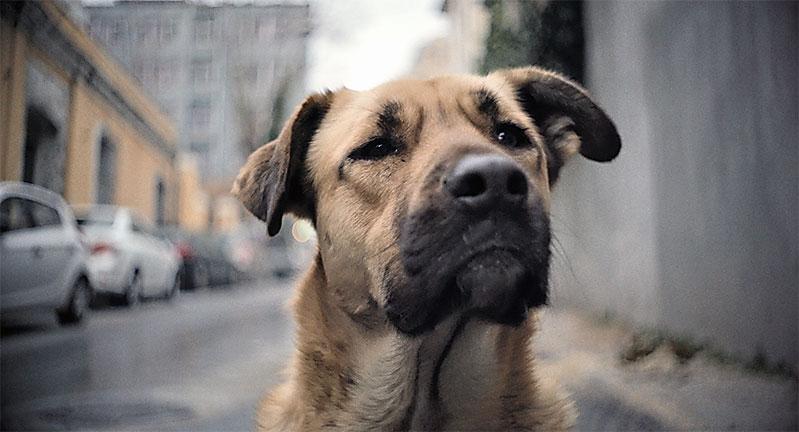The Hamptons International Film Festival offers opportunities to see the next big critically acclaimed blockbuster as well as smaller deserving films that might never receive distribution. Each year, writers from The Star view some of those smaller films and offer summaries and reviews to help viewers make more informed choices among them. This year, Jamie Bufalino, Baylis Greene, Jennifer Landes, Bella Lewis, and Mark Segal give readers a sneak peek at a few of the selections.
If there are drive-in presentations, the times and places are included. If a film's virtual screening has a limited time window, it is indicated; all other virtual films are available from tomorrow through Wednesday.
"Gunda"
Victor Kossakovsky
Virtual, tomorrow, 7 p.m.; Saturday, 7 p.m.
Although superficially humble, the film "Gunda" is breathtaking in its simple complexities as it studies the activities of farm animals in Norway, Britain, and Spain.
With no music, narration, or color stock, the documentary lets the animals it follows in high-contrast black and white tell their own story in a universal language.
The star of the film is Gunda, a mother sow on a farm in Norway. We watch at the moment of the birth of her piglets as she lies sideways with only her head protruding from her pen. The piglets are still wet from the womb as they make their first moves to struggle over her and out into the field.
The mad and greedy scramble for their first taste of their mother's milk attests to the brood's life force, even though an obvious runt has problems keeping up with its siblings. The film documents the early days in the pigs' lives, with the camera often settling on Gunda as she demonstrates a universal world weariness experienced by mothers of all species.
Interspersed are examinations of the pluck of a one-legged chicken and the behavior of a pair of cows who exhibit great inventiveness in tackling a pesky problem.
The film keeps returning to the pigs as they grow larger in between these segments, but never reaching anything approaching adulthood. They frolic in the fields and track their mother on her rounds, letting her know when it's time to feed again.
Within this spare environment, the audience witnesses the real community of these animals as they experience what is apparent happiness and emotional distress. The light touch, devoid of anthropomorphizing or sentimentality, provides a unique and satisfying window into a world not often seen or documented.
The filmmakers take the time needed to watch bonds form and see real development in its subjects in ways that are undeniably sentient and advanced without need of human justification. Through their lens, the animals are allowed to tell their own story. J.L.
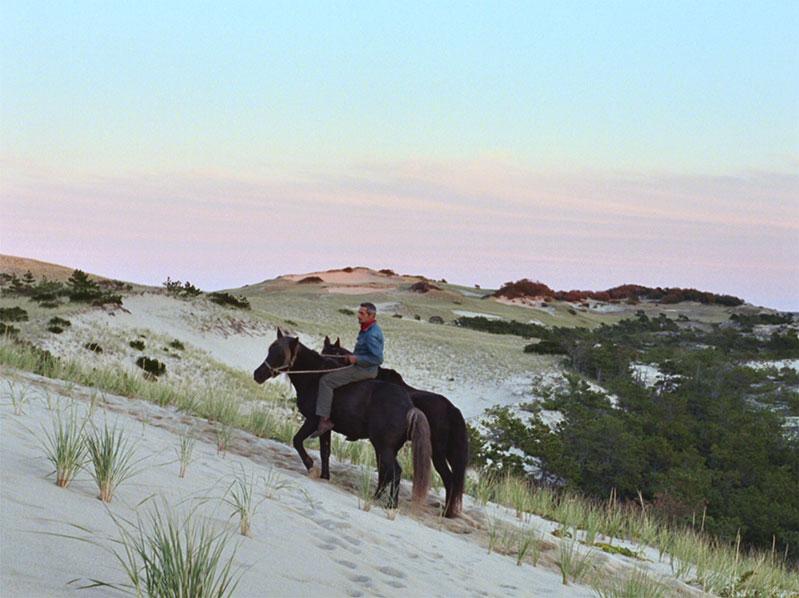
"I Am a Town"
Mischa Richter
Drive-in, Amagansett, Sunday 7 p.m.
Virtual
One might expect a documentary about Provincetown, Mass., to delve into the town's colonial history or its fishing heritage or its status as a summer haven for members of the L.G.B.T.Q. community. This film by Mischa Richter, a visual artist who spent most of his childhood in the Cape Cod town, touches on those topics, but it's more interested in examining why longtime residents find the place so alluring, in figuring out, as one young artist interviewed in the film puts it, "What about Provincetown is enough?"
For Mr. Richter, the answer seems to be its diversity. Since the film doesn't have a story arc, it's the town's array of quirky residents that draws the viewer along. The camera captures a multigenerational family of Portuguese descent preparing dinner while discussing days gone by, a grizzled fisherman doffing his shirt to show off the rock-hard physique honed by his trade, a street musician playing a piano in an alleyway, a gay man talking about how much safer he feels walking the streets there as compared to New York City.
Those expecting a traditional documentary filled with copious details about little-known facts will likely be disappointed. Almost all of the people interviewed are unnamed, and little context about their lives or the stories they tell is provided.
When one interviewee talks about the dangers of overdevelopment in the area, a different documentary would have provided images of endangered buildings or land; in this one, the camera lingers on the man's fish tank.
Ultimately, this is an art film made up of moody vignettes that attempt to capture the essence of Provincetown and the people who, like Mr. Richter, can't get enough of it. That essence may be lost on those without such a deep connection to the place, but no doubt everyone will be entranced by the beautiful shots of sea, sky, and dunescapes. J.B.
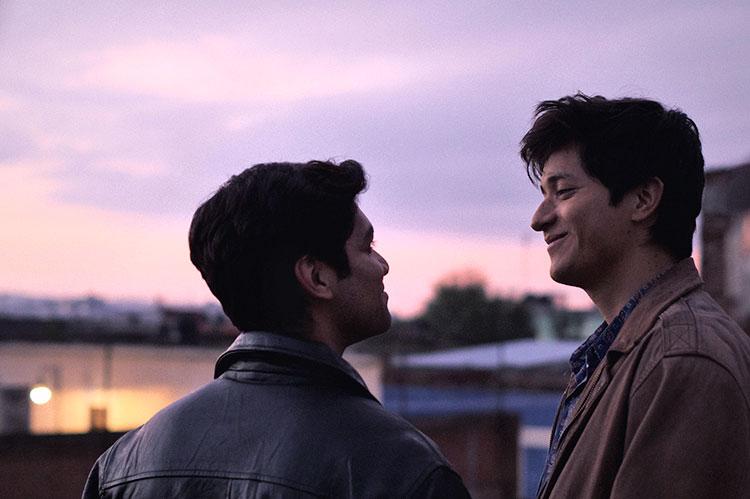
"I Carry You With Me"
Heidi Ewing
Virtual, Saturday, 7 p.m.; Tuesday, 7 p.m.
Spanish with English Subtitles
Ivan, an older Latino male, rides on a New York City subway and begins to describe a recurring dream he has of returning to Mexico.
His work clothes and the return to his youth in his native land spark a number of assumptions: illegal immigrant, menial laborer, a life in the shadows, and alone.
The long flashback reveals he had a son as a young adult with a woman he was already estranged from at the time he is looking back on. More assumptions arise and, like the previous ones, are eventually disproven in this complicated film, which happens to be based on a true story.
Ivan is also revealed to be an aspiring chef who went to culinary school. The film suggests that he is talented and eager to begin his career. And yet, the Mexico City restaurant scene is prone to nepotism and he is stuck fixing toilets when he wants to be in the kitchen.
Early on, we also learn that he is gay and has known it since he was a child. Being in a culture that celebrates an ideal of macho manliness, we see how it has affected him and Geraldo, the man he meets and falls in love with, throughout their lives.
The film moves back and forth in time, jumping back earlier or later than those first opening scenes. Sometimes it is told from Ivan's perspective and also, less often, from Geraldo's.
At a crucial point, Ivan realizes he must leave Mexico and try for a better job and life in the United States. He promises his son and Geraldo that he will return in a year. We experience the drama and stress of his crossing and the harsh realities of life as an undocumented immigrant in this country.
Still, he remains single-focused, taking advantage of an unexpected kitchen crisis and self-taught English lessons with Geraldo (who joins him in New York) to make his breakthrough.
The film is rich in complexity and verité. Cities are viewed from the class level of those portrayed and New York gains in attractiveness as the couple moves up in the world.
There are no easy answers offered here. Although increasingly intolerant of immigrants, America proves to be more accepting of homosexuality and their relationship than Mexico was, even when that is where their heart is. J.L.
"Stray"
Elizabeth Lo
Virtual
The Greeks thought dogs were the animal closest to man on the great chain of being because of their ability to feel shame. In Elizabeth Lo's documentary "Stray," they show something else, as they wander the streets of Istanbul -- courage, curiosity, tenacity. Maybe even fellow-feeling.
You might not imagine that a film of hand-held tracking shots and close-ups of stray dogs would keep your attention for 72 minutes, absent any voice-over, no less, but it is, in fact, mesmerizing. Ms. Lo has found a charismatic lead character, if you will, tan-coated Zeytin, alternately described by onlookers as "beautiful" and "a fighting breed," one old gent warming himself beside a trashcan fire commenting, "If she was fed more, she could fuck anyone up."
But Zeytin, though scrappy and street-tough, will bare teeth only in self-defense. Instead we see the hound with a remarkably expressive face -- one that looks to be commenting on the surrounding human activity -- patiently surveying traffic before crossing the street with care, come nighttime curling up curbside a few feet from passing cars and trucks like a family pet on a kitchen rug, exploring the city with a canine friend, Nazar, and, most significantly, in terms of the storytelling, tagging along with a group of glue-sniffing homeless kids. You see the parallelism.
Just a bit of back story: It's illegal to kill or detain stray dogs in Turkey, which can be a problem in densely packed, cosmopolitan Istanbul. And to get back to the Greeks, Ms. Lo punctuates the documentary with quotes from the ancients, like Diogenes, from 369 B.C., seemingly addressing life on the street: "It is the privilege of the gods to want nothing, and of godlike men to want little." B.G.
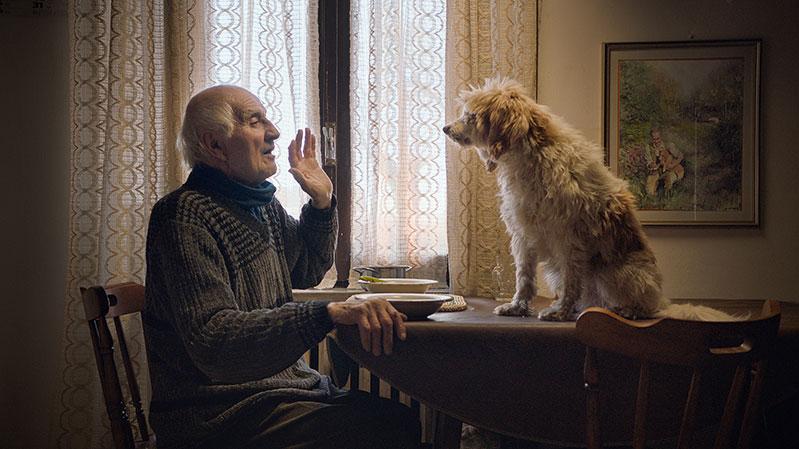
"The Truffle Hunters"
Michael Dweck and Gregory Kershaw
Drive-in, East Hampton, tomorrow, 7 p.m.
Virtual, Saturday, 3 p.m.; Sunday, 7 p.m.
In the opening shot of "The Truffle Hunters," the camera zooms very slowly in on a solitary figure, slicing his way uphill through dense underbrush followed by two dogs. The stately opening shot suddenly yields to a close-up of the man and one of his dogs as they dig furiously in the soil until he strikes culinary gold -- a meaty white Alba truffle.
A spellbinding and gorgeously shot documentary, "The Truffle Hunters" is a portrait of a handful of older men in the Piedmont region of northwest Italy who follow a way of life that seems to have changed little over the centuries. The story is told without explanation or talking heads; the only talking is between the hunters, whose conversations illuminate their trade.
Michael Dweck is a visual artist known for his photography and his film, "The Last Race," a documentary about the Riverhead Raceway. Gregory Kershaw is a documentary and narrative filmmaker who was the director of photography on that film.
Together they have constructed "The Truffle Hunters" from a series of fixed-camera tableaus, many shot at night with a chiaroscuro reminiscent of Caravaggio or Rembrandt, others in day-lit interiors that recall Vermeer. In some, the men discuss the changing nature of their enterprise. One, Angelo, a bearded iconoclast who makes his own tools, has forsaken the trade because some hunters are so greedy they poison others' dogs and slash tires.
While those scenes anchor the film, other shots seem straight out of "The Last Race." The filmmakers found a local shoe cobbler who created miniature camera harnesses that could be strapped around the dogs' heads. Jerky, hyperkinetic, these sequences put the viewer in the dogs' point of view, close to the ground, tearing through the brush, pawing frantically at the soil.
There are glimpses outside the hunters' world, among them a truffle auction and a broker on the phone discussing a sale to "the president." But it is the hunters' lives that are the core of the film. There is Carlo who, at 88, refuses to give up his trade despite the urgings of his wife, Aurelio, 84, whose biggest worry is the fate of his beloved dog, Birba, and Sergio, the hunter from the opening shot, who is shown pounding away outdoors at an elaborate drum set.
The pride and determination of these men is captured in the final shot, when Carlo painfully climbs out of an open window under the cover of night while his dog eagerly awaits the nocturnal hunt. M.S.
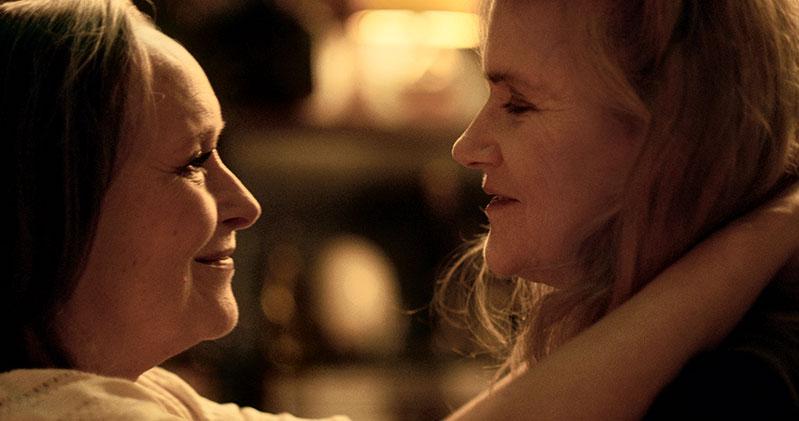
"Two of Us"
Filippo Meneghetti
Virtual
We know from the beginning of "Two of Us" that Madeleine and Nina are not only neighbors but also longtime lovers. Both retired, they discuss their plan for Madeleine to sell her apartment so they can move to Rome, where they met decades before, and at last live openly.
But their affair was carried on clandestinely while Madeleine was married, and their relationship is still a secret from her two grown children, Anne and Frederic. Urged on by Nina, Madeleine invites the children to dinner on her birthday in order to reveal the truth, but her nerve fails her.
Through a chance encounter with the agent who had been engaged to sell Madeleine's apartment, Nina learns that her lover has changed her mind. A fight ensues between the women, and Nina, following a crack about "old dykes," storms off.
Before the women can reconcile, Madeleine has a stroke that leaves her unable to speak. What had been a relatively straightforward story about a secret love affair is transformed into a complex and suspenseful psychological thriller, fueled by powerful performances by Barbara Sukowa (Nina), an actress known for her work with Rainer Werner Fassbinder and Margarethe von Trotta, and Martine Chevallier (Madeleine), a veteran of the Comedie Francaise.
Nina embarks on an obsessive quest to be with her lover without revealing that she is anything other than a concerned friend. Her attempts to communicate with Madeleine arouse the suspicions of the children and a caregiver, forcing Nina to spy on the comings and goings across the hall through her peephole, sneak into Madeleine's apartment when the caregiver and children are out, and eventually rescue Madeleine from a nursing home.
Ms. Sukowa is utterly convincing as an increasingly desperate and seemingly unhinged lover, and Ms. Chevallier completely inhabits her physically stricken character while managing to convey through expression and gesture her increasingly urgent desire to be with Nina. Lea Drucker gives a nuanced performance as Anne, and Muriel Benazeraf adds an element of menace as the caregiver who figures out Nina's secret and threatens to expose her to the children. M.S.
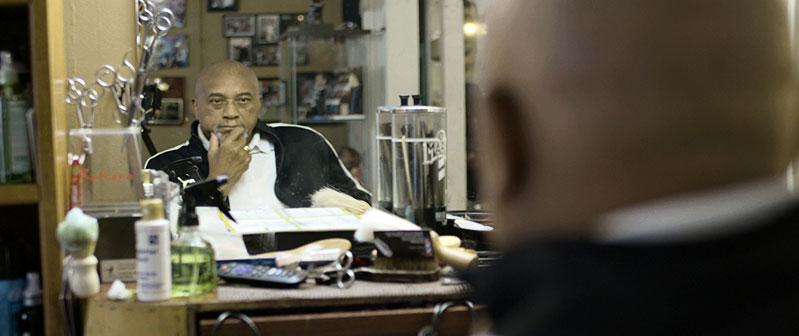
"With Drawn Arms"
Glenn Kaino, Afshin Shahidi
Drive-in, East Hampton, Thursday, 7 p.m.
Drive-in, Amagansett, Thursday, 7 p.m.
Virtual, Thursday, 7 p.m., Oct 14, 7 p.m.
Right up there among the most iconic images of all time is that of Tommie Smith and John Carlos, two United States track athletes, standing at the podium during the 1968 Olympics medal ceremony and raising gloved fists as the national anthem plays.
Their silent protest demonstrated Black power right under the nose of white America, and to the great dismay of the latter. The image is a moving piece of still art in its own right, but in documentary form, the viewer understands in full just how devastating a toll the gesture had on Mr. Smith's life. The film reveals today's pernicious relevance to the more than 50-year-old controversy through interviews with Megan Rapinoe, Colin Kaepernick, John Lewis, and Jesse Williams. Interviews with Tommie Smith, quite the storyteller himself, underline the solitude that exists in sacrifice, even one that all of America saw happen.
The documentary tracks Mr. Smith's collaboration with the film's director Glenn Kaino, an artist who long held Mr. Smith up, or, had him taped to his desktop computer. As a pair, they create art inspired by Mr. Smith's fist and live out some belated recognition that skipped over the athlete, who rather was asked to give back his gold medal after the 1968 ceremony (he and Mr. Carlos refused). Poignant moments include an old interview in which Howard Cosell asks, "Tommie, would you explain to the people of America what you did and why you did it?" Mr. Smith replies calmly, "First of all Howard, I would like to say I am very happy to have won the gold medal here in Mexico City."
The moment in which Mr. Smith receives his own Wheaties Box, half a century after the token rite of passage passed him by as an athlete, is not a scene for the faint-hearted. Interesting also are moments of an interview with Brent Musburger, in which he reflects back on himself as a "young and dumb" sports reporter who, at the time, called Mr. Smith and Mr. Carlos "black-skinned storm troopers." The documentary addresses the grand scheme of things through the details. Mr. Kaino relays how Mr. Smith pointed to a prominent bulge on his forearm, "class muscle." He said, "You only get that from picking cotton," which Mr. Smith did for work as a child. Mr. Kaino gushes, "He told me that when he was on the victory stand, he flexed it to let everyone know that even if you picked cotton you were up there with him." The famous picture is shown again and those who didn't notice the substantial muscle the first time will wonder how they missed it. B.L.

